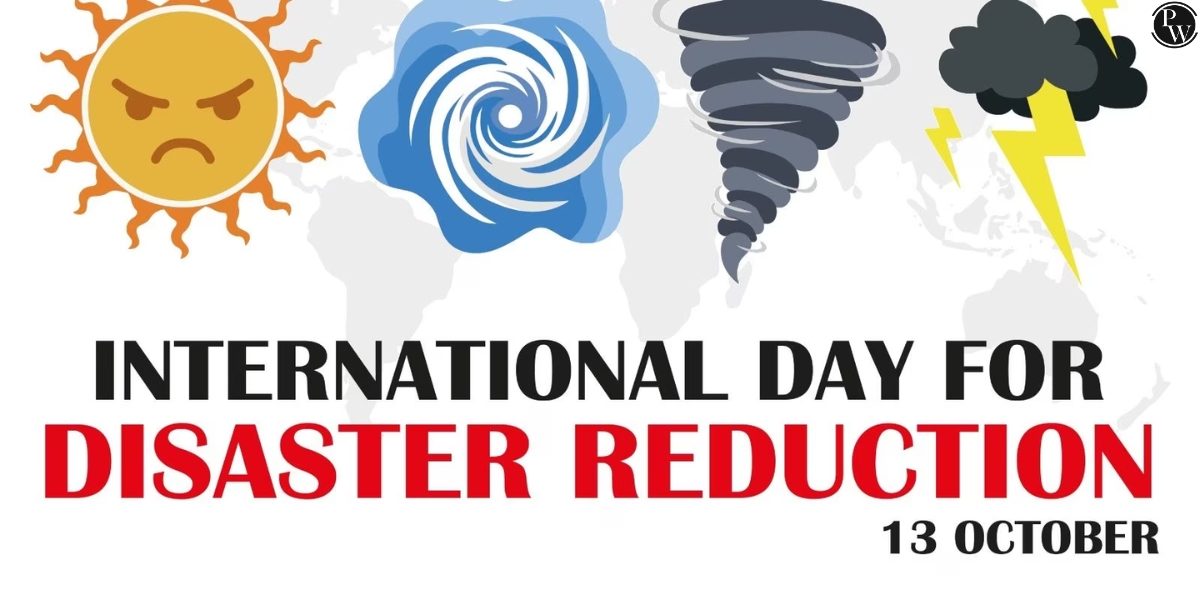

World Forestry Day 2025, also known as the International Day of Forests 2025, is being celebrated globally on March 21. This significant day, established by the United Nations General Assembly in 2012, aims to raise awareness about the importance of forests and their role in sustaining life on Earth. Each year, a unique theme is chosen to highlight different aspects of forestry conservation.
For World Forestry Day 2025, the theme is "Forests and Food.", emphasizing how forests contribute to food security, nutrition, and sustainable livelihoods.
What is World Forestry Day?
World Forestry Day is observed every year on March 21 to raise awareness about the crucial role forests play in sustaining life on Earth. Established by the United Nations General Assembly in 2012, the day highlights the significance of forests in climate regulation, biodiversity conservation, and human livelihoods. Various activities such as tree planting drives, awareness campaigns, and policy discussions are organized worldwide to promote sustainable forest management.
|
World Forestry Day 2025 Overview |
|
|
Event |
Details |
|
Name |
World Forestry Day 2025 / International Day of Forests 2025 |
|
Date |
March 21, 2025 |
|
Established By |
United Nations General Assembly (2012) |
|
Theme |
"Forests and Food" |
|
Objective |
To raise awareness about the importance of forests in food security, biodiversity conservation, and sustainable living |
|
Observed By |
Global participation, including governments, environmental organizations, and individuals |
|
Activities |
Tree planting, educational programs, seminars, social media campaigns, and policy discussions |
|
Importance |
Highlights forests' role in climate change mitigation, agriculture, food production, and ecosystem balance |
World Forestry Day 2025 Theme
The World Forestry Day 2025 theme is "Forests and Food", emphasizing the connection between forests, food security, and nutrition. This theme highlights how forests support millions of people by providing wild foods, agricultural benefits, and sustainable livelihoods. Forest ecosystems play a vital role in maintaining soil fertility, regulating climate, and supporting biodiversity, which directly impacts global food systems.
World Forestry Day Celebration
Every year on March 21, World Forestry Day is celebrated with tree-planting campaigns, conservation awareness drives, and educational programs. Governments, NGOs, environmental activists, and individuals come together to celebrate the importance of forests.
Significance of International Day of Forests 2025
Forests are essential for maintaining ecological balance, supporting wildlife, and providing livelihood opportunities for millions of people. They also play a crucial role in regulating the global climate, conserving water resources, and ensuring biodiversity.
1. Forests Provide Food and Nutrition
-
Over 5 billion people globally rely on forests for food and livelihood.
-
Forests provide fruits, nuts, seeds, tubers, honey, wild meat, and edible insects that contribute to global food security.
-
Wild meat from forests is a crucial protein source for many rural and Indigenous populations.
2. Forests Support Sustainable Agriculture
-
Forests host pollinators essential for food production.
-
They protect soil fertility, reduce erosion, and regulate water cycles, benefiting agricultural lands.
-
Over 85% of the world’s major cities depend on forested watersheds for freshwater.
3. Forests as a Livelihood Source
-
Around 2 billion people use wood and traditional fuels for cooking.
-
In rural areas, forests contribute up to 20% of household incomes, providing jobs in timber, fuelwood, and non-timber forest products.
4. Forests as a Climate Change Solution
-
Trees absorb carbon dioxide (CO₂), reducing greenhouse gas emissions.
-
Sustainable forest management helps mitigate climate change effects.
-
Forests act as climate regulators, maintaining temperature balance.
5. Threats to Global Forests
-
Deforestation: Every year, 10 million hectares of forests are lost due to logging, agriculture, and urban expansion.
-
Forest Fires: Approximately 70 million hectares of forests are affected by fires annually.
-
Illegal Logging & Encroachment: Unsustainable logging practices lead to habitat destruction and biodiversity loss.
Forestry in India
India has one of the most diverse forest ecosystems in the world, covering about 24% of its total land area. These forests play a necessary role in maintaining ecological balance, supporting wildlife conservation, and sustaining rural economies. However, Indian forests are under increasing pressure due to rapid urbanization, population growth, and climate change.
Key Facts About Indian Forests
-
India’s total forest and tree cover stands at 78.29 million hectares, accounting for 23.81% of the country's geographical area.
-
More than 275 million rural people in India depend on forests for fuelwood, fodder, medicinal plants, and non-timber forest products.
-
Forest-based industries provide employment and contribute significantly to the country’s economy.
Challenges Facing Indian Forests
-
Deforestation & Encroachment
-
Large-scale deforestation for agriculture, infrastructure projects, and urban expansion is a major concern in India.
-
Forest encroachment by human settlements leads to habitat destruction and biodiversity loss.
-
Illegal Logging
-
Unauthorized logging and timber smuggling have contributed to the decline of valuable tree species.
-
The demand for wood-based products continues to put pressure on India's forests.
-
Forest Fires
-
Wildfires affect over 36% of India's forests, causing loss of flora and fauna, releasing carbon dioxide, and impacting local livelihoods.
-
Climate Change & Desertification
-
Rising temperatures and unpredictable rainfall patterns pose serious challenges to forest regeneration and conservation efforts.
-
Desertification due to overgrazing and unregulated land use is leading to the degradation of forest lands.
Measures to Protect Forests in India
To combat deforestation and promote sustainable forest management, India has implemented various conservation policies and programs.
-
Afforestation & Reforestation
-
The Indian government has launched large-scale tree-planting initiatives under programs like the Green India Mission and the National Afforestation Programme.
-
Encouraging community participation in afforestation efforts helps restore degraded forest lands.
-
Forest Policy & Legal Protection
-
The Forest Conservation Act (1980) regulates the diversion of forest land for non-forest purposes.
-
The National Forest Policy (1988) aims to increase forest cover to 33% of India's total land area.
-
Wildlife Conservation Efforts
-
Strengthening Protected Areas, National Parks, and Wildlife Sanctuaries to safeguard biodiversity.
-
Implementing anti-poaching laws to protect endangered species.
How to Celebrate World Forestry Day 2025
People around the world can participate in World Forestry Day 2025 by taking proactive steps to protect and restore forests. Here are some ways to get involved:
1. Tree Planting Drives
-
Join local afforestation campaigns and tree-planting programs.
-
Encourage urban forestry initiatives to expand green spaces in cities.
2. Raise Awareness on Social Media
-
Share informative posts about forest conservation and sustainable forestry.
-
Use hashtags like #ForestDay #WorldForestryDay2025 to engage a wider audience.
3. Support Sustainable Forest Products
-
Choose eco-friendly and certified sustainable wood products.
-
Reduce paper consumption by opting for digital alternatives.
4. Attend Educational Events
-
Participate in seminars, workshops, and webinars on forest conservation.
-
Engage with local forest departments and environmental NGOs.
Conclusion
World Forestry Day 2025 acts as a powerful reminder of the importance of forests in sustaining life on Earth. With the theme "Forests and Food," the focus is on food security, sustainable agriculture, and climate resilience. As deforestation and environmental degradation continue to threaten ecosystems, active participation in forest conservation is more crucial than ever.
Ready to boost your UPSC 2025 preparation? Join PW's UPSC online courses today!
World Forestry Day 2025 FAQs
What is the theme of World Forestry Day 2025?
Why is World Forestry Day celebrated?
How does forest conservation help the environment?
What are the key threats to forests today?
How can individuals contribute to forest conservation?
What role do forests play in climate change?













